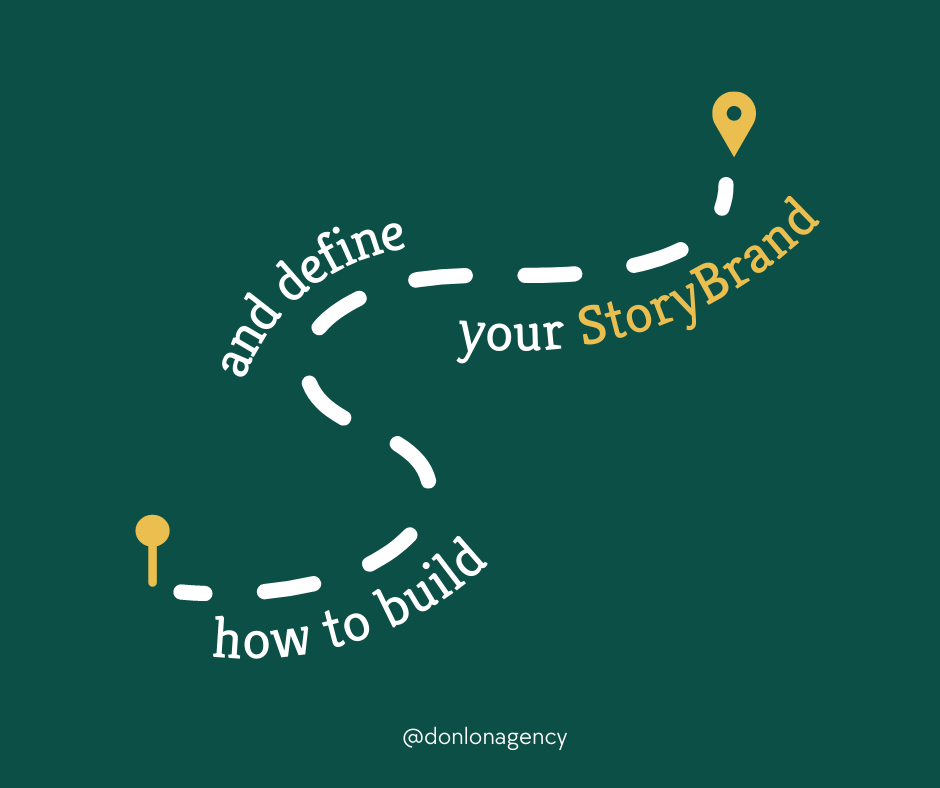
What does it mean to build a brand story?
Why is it important to have a brand story?
Both questions are ones that I dove a little deeper in to get a better understanding of how to capture and secure a loyal constituent base. I recently attended a webinar hosted by Jay Mandel where he broke down the book Building a StoryBrand by Donald Miller. During the webinar, we separated the book into seven steps that an organization should take when creating their own StoryBrand.
Building a brand story is a way for marketers to set a scene for their audience and help guide them through pathways, so constituents can engage and connect with the brand. Having a story brand is important for every organization because it connects the constituent to the organization’s offer.
When starting to create your StoryBrand, you want to develop it like an actual story with these steps:
- establish a hero
- explain a problem the hero faces
- create a guide to help the hero
- set a plan with the hero
- discuss potential failure
- provide a call to action (CTA)
- finish with success
In this scenario, you want to position your target audience as the hero of the story with a problem that your organization has the solution to. This style of copywriting is often referred to as donor centric.
When defining your audience, it’s critical to narrow down who your audience is, and what will influence them in the decision-making process. Connecting with them emotionally is one of the ways to drive them to your organization, as opposed to competitors.
After defining your target audience, you can narrow what the problem is and how your organization will best provide the solution. You will want to think about what kind of problems keep them up and how you can provide the solution they need. Once you address what your constituents need, then you can build your story around those needs.
At Donlon Agency, we think about each client’s needs and what we can do to help meet their needs. This can be anything from providing better health to local communities to accelerating cancer research. After establishing our client needs (or the campaign goal), we then develop compelling copy — creating a need for the constituent and problem to solve.
Once you set up your hero and problem, you then want your brand to act as a guide for your audience. Rather than your brand being the hero to your constituents’ problems, you want to assist them in their problems and help move them to the solution. It’s important to be empathetic toward your constituents and to keep in mind how their problems make them feel. This allows you to navigate your story to cater to your audience with a plan that works.
The plan that you create should define the path to success. There are two types of plans that are defined by Miller, a process plan, and an agreement plan:
- The process plan should lay down steps that constituents can follow. You want it to be easy to understand and encourage them that you have the solutions they need.
- The agreement plan should list out what you will provide to your constituents, so they won’t be worried about the risks of doing business.
Then, provide your constituents with a CTA that makes it apparent as to what their next step should be. Think about what you want your constituents to do now that they have all the information they need to take action. For some organizations, this could be making a donation, starting a fundraiser, volunteering, etc. Defining what your CTA is will help your constituents decide the best way for them to engage.
It’s also important to address the potential of failure. As a guide, you will want to reassure your clients that the plan you have set for them will lead to success. Emphasizing the importance of the plan will help comfort them when thinking of potential outcomes of failure.
After these steps have been completed, end your story with the actionable success and outcome that can take place because of their engagement. You want your constituents to be happy (feel good) they chose your organization to help — this will increase your chance of retaining and growing their support in the future.
Building a StoryBrand is an effective strategy to make your constituents feel like the main character in solving a problem that impacts them. Remember, don’t just tell a story to your constituents, but invite them into the story, so they know that you are with them every step of the way.










